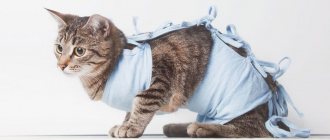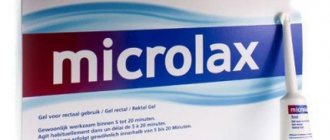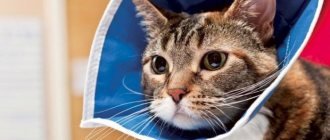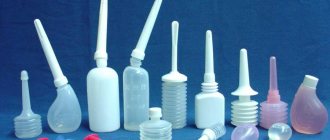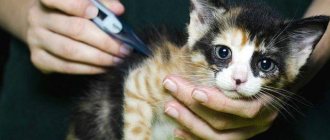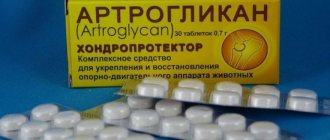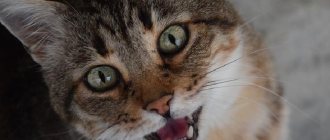Fluffy pets bring their owners not only joy and peace, but also a variety of troubles, including those associated with being outside. After such walks, the animal often has wounds on the head, ears, body and limbs. In such cases, the owner should have an idea of how to treat the cat's wound. This is important not only for the furry pet, but also for household members, in order to eliminate the possibility of infection.
It is also necessary to know what kind of wounds there are and how to speed up the recovery of the injured pet.
Causes of wounds
These creatures are not only very curious, but also extremely nimble. Therefore, they often return home with various skin lesions. This is a consequence of fights with members of one’s own family or with dogs. Of course, before deciding how to treat a cat’s wound, you need to assess its condition. A lot can depend on the origin of the wound.
You will have to independently determine the nature of the damage and its size. The choice of therapeutic method depends on the conclusions drawn. When choosing what to treat a cat’s wound with, you need to look for something that will alleviate the animal’s condition as much as possible and speed up tissue healing.
Disorders of the sebaceous glands
Seborrhea is a disorder of the sebaceous glands, leading to their blockage and inflammation. More often it is a consequence of another pathology, rather than an independent disease. The causes of itching are demodicosis, hormonal imbalances, mycosis, foliar pemphigus, deficiency of fatty acids and vitamins. Itching is absent in dermatosis, ichthyosis, and sebaceous adenitis. Wounds on a cat's tail appear precisely because of severe bouts of scratching. Therapy consists of regular water treatments using special shampoos, moisturizers and emollients (for dry forms). If seborrhea is oily, then degreasers and keratolytic agents (sulfur compounds, salicylic acid, selenium sulfide) are prescribed. It cannot be done without the use of antibiotics and antifungal drugs.
Primary processing
If the damage does not pose a threat to the life and health of your pet, then you can postpone visiting the veterinarian. But treatment must be started immediately to prevent infection of the wound and its subsequent suppuration. Primary sanitation can be performed using ordinary potassium permanganate. Dilute it in water to make a pink solution and wash the wound using a cotton pad.
Basic information
Wounds that are contaminated with pyogenic microflora are called purulent. In appearance, such lesions are easy to distinguish from other wounds, since pus oozes from them, and an unpleasant odor often emanates from the wound surface. The fur around it is sticky from dried exudate. Its color varies from greenish-yellow to ichorous (the color of meat slop). But in the latter case, we are talking, rather, not about a purulent, but about a necrotic course of the inflammatory process.
The main danger of any (!) purulent focus (even a small boil, and not just a wound) in the body is the likelihood of developing sepsis, that is, the entry of pyogenic microflora and its toxins into the bloodstream. The more weakened the cat’s body, the higher the likelihood of such a sad outcome. Oddly enough, you can determine the degree of immunity tension simply by looking at the pus.
If it is thick (the consistency resembles sour cream), has a greenish-yellow color and a slightly sweetish, but not unpleasant, odor, then everything is fine - such an exudate is called benign and indicates normal immunity. In the case when the pus resembles liquid yogurt of a greenish-red/whitish hue, this indicates poor immunity and severe depletion of the cat’s body’s defense mechanisms. If your pet has just such an exudate, it is better not to practice home treatment, but to immediately show it to a veterinarian.
We create conditions for healing
Primary processing has quite clear tasks and functions. It is necessary to wash off dirt and dried blood. This will reduce the likelihood of wound infection. But this is not enough. Speaking about how to treat a cat’s wound, we also need to think about what we will use to ensure the restoration of the skin.
The first “rescue” remedy that should be in every first aid kit is Levomekol. It has a bactericidal effect. But that is not all. Levomekol ointment is also famous for its analgesic effect. Before treatment, it is very important to clean the edges of the wound and remove all hair from the area of damage. Don't forget to bandage the wound. Such measures help to avoid complications. The wound heals quickly and the animal recovers.
Veterinary first aid kit in case of an injured cat
Cat owners need to prepare a veterinary first aid kit in advance. It includes wound treatment products, instruments and materials.
The first aid kit should include means for treating injuries.
Table 1. Contents of a home first aid kit.
| Name of material or drug | Purpose |
| Dressings - sterile bandage, cotton wool | For a variety of wound treatments, as a dressing material |
| Chlorhexidine, povidone-iodine, saline solution, furatsilin, potassium permanganate, hydrogen peroxide, miramistin | Compositions for disinfection |
| Sprays Aluminum, Septonex, Terramycin, etc. | Disinfectants |
| Disposable sterile gloves | Protect human hands and damaged animal tissues from infection |
| Levomekol, Vishnevsky's balsamic liniment, Solcoseryl, etc. | Ointments with antibacterial properties |
| Disposable syringes | For washing purulent wounds, administering painkillers |
| Preparations Dexpanthenol, Ranosan, Sangel, etc. | To accelerate tissue regeneration, including those injured by burns |
| Novocaine | Painkiller |
| Surgical scalpel | For opening abscesses |
| Tourniquet | Necessary for tightening the limb when blood vessels are damaged |
Deep damage
Your pet does not always get away with light scratches. If he wandered into a neighbor's territory and collided with a dog, the consequences could be very dire. Deep open wounds are a reason to immediately contact a veterinary clinic. Only a specialist can assess whether conservative treatment methods can be used or whether surgical intervention is required. It is often necessary to stitch a lacerated wound to speed up its healing.
Of course, this does not eliminate the need for initial treatment of injuries before visiting the clinic. Such actions are important to prevent complications. If suturing the edges of the wound is indicated, this does not negate further therapy. Treatment will be prescribed individually, depending on the severity of the animal’s condition. For one, this is treatment with antiseptics. And the other will need a course of antibiotics. Do not forget that general sepsis is a consequence of improper treatment, and the skin damage may be minor.
Licking wounds is harmful
Cats always lick their wounds. We can't let them do this. The tongue of animals is covered with sharp, keratinized papillae. Licking does not promote healing and leads to an increase in the area of damage. In addition, a cat uses its tongue to wash different parts of its body. Subsequent contact with the wound surface can cause bacterial infection.
Avoid licking the wound
To prevent the animal from making such attempts, special devices are used - for example, a postoperative collar. If there are wounds on the body, put on a blanket. The simplest models are made of natural cotton fabric with good breathability.
Postoperative collar on a cat
If the surface is rotten
Not all owners know what this means. Usually the wound does not produce a large amount of exudate and does not have an unpleasant odor. But if you see that the wound is covered with a yellowish coating, it means that it is affected by some kind of bacteria. Treatment of purulent lesions in cats is a rather complex and time-consuming process. He pursues several goals at once. First, it is necessary to destroy the source of inflammation. The main thing is that the infection does not spread to neighboring tissues and does not enter the bloodstream.
In addition, it is important to provide high-quality care for your pet, good nutrition, which will restore the strength and immunity of your pet. It is best not to select medications experimentally and not to ask friends how to treat a purulent wound on a cat. Such soft tissue lesions can only be treated by a veterinarian. It is better to entrust the entire process of treating an infected wound to a specialist. He has much more experience and knowledge, and also has special equipment.
How to speed up wound healing
To speed up healing, you should strictly follow the veterinarian’s recommendations. You can also use special long-acting wound-healing wipes for cats, for example, Antivtex. The use of antibiotics prescribed by a doctor will also promote rapid regeneration of damage.
In addition, it is necessary to provide the animal with complete rest and prevent licking. To do this, you need to use special collars and tightly secured gauze bandages that the pet cannot remove on its own.
Suture after surgery on a cat
Prescribing antibiotics
As a rule, local therapy alone is not enough. Typically, veterinarians prefer the injectable antibiotic Streptomycin. It can be replaced with Bicillin-5, but the decision should be made only by the treating veterinarian. If you do not know how to give injections yourself, you can bring your animal to the clinic every day. The doctor will also tell you how to treat the cat’s wound. Most often, veterinarians prescribe the same hydrogen peroxide, Chlorhexidine or Levomekol.
The surface of the damage can be dried using crushed Streptomycin tablets. They have both an anti-inflammatory and drying effect. The treatment regimen is approximately as follows: the furry patient is given antibiotic injections twice a day. Additionally, three times a day, the surface of the wound is treated with an antiseptic solution. An ointment is applied to it, which “pulls out” the pus, relieves inflammation and helps restore damaged skin.
How to treat a cat's wound
Every owner should know how to treat an open wound on a cat, since the damage is sometimes dangerous.
Furacilin solution
What happens if you cut a cat's whiskers: will they grow back?
This product actively counteracts microbes and prevents their proliferation. It can be used on any type of wound. The product can be purchased at a pharmacy or made independently from several tablets. It is necessary to treat the wound with a napkin soaked in the solution, or by securing a bandage to the surface.
Important! Furacilin can cause allergic reactions in a kitten, so you should stop using the product if you are hypersensitive.
Hydrogen peroxide
Many owners are interested in the question of what to do when a cat hurts its paw, what to treat from the home first aid kit, and how often to do it.
In this case, hydrogen peroxide will help, which is used to treat wounds and stop bleeding. Moisten cotton wool or a napkin with the product and apply it to the affected area. The product is recommended to be used even in the presence of pus.
It is necessary to wash the wound with peroxide until it stops foaming. It is the foam that indicates the presence of dirt in the damaged area.
Baneocin ointment
This drug is used to treat both small wounds and purulent lesions. The composition includes an antibiotic that relieves inflammation, kills germs and promotes healing. The ointment is not addictive, so it is used 3-4 times a day. The course of treatment should not exceed 14 days. Otherwise, you can provoke a fungal infection.
Important! Baneocin is not advisable to use in the treatment of cats with liver and kidney failure.
Levomekol ointment
A popular ointment for cats for wound healing is Levomekol. Has a good antimicrobial and anti-inflammatory effect. Used for recovery after surgery, as well as in the treatment of various open wounds. The antiseptic effect has a positive effect on purulent wounds and inflammatory processes in tissues.
Advice! You can apply the ointment to the surface of the injury or place napkins soaked in the preparation inside.
Use the ointment for about 10 days, during which time all the pus should come out of the wound
Open or closed wound
You need to understand where your area of responsibility ends and the scope of a professional veterinarian begins. Open wounds must be washed, cleaned of dirt and treated with an antiseptic solution. Under no circumstances should iodine or brilliant green be used, as they cause chemical burns. Can cats treat wounds with hydrogen peroxide? Yes, it is great for disinfection. This can be done at home. Such a simple and cheap remedy will avoid serious consequences. If your pet has an abscess, you will not be able to deal with it on your own. It usually looks like a lump or lump on the animal's body.
The abscess is opened in the veterinarian's office under anesthesia. The wound cavity is cleared of pus and filled with disinfectants. After this, the doctor will write a prescription and explain how to treat the cat’s wound at home. Often these are already listed drugs or their analogues.
Wounds from opening a breast tumor
If a cat eats and drinks normally and leads a normal life, owners do not always decide to euthanize it if it has breast cancer. However, after opening the tumor, wounds are formed that gradually increase in size.
Opened tumor in a cat
Oncological ulcers are treated with Levomekol or similar external agents:
- Sulfargin is an ointment containing silver sulfadiazine. The substance counteracts gram-positive and gram-negative bacteria. When released, metal ions exhibit long-lasting antimicrobial and bactericidal effects. The product does not have necrolytic or mutagenic properties.
- Solcoseryl is an ointment based on a deproteinized hemoderivative obtained from calf blood. The ointment supplies phosphates to tissues, increases the use of oxygen and the supply of glucose to cells, improves repair, promotes collagen formation and reduces secondary degeneration in damaged structures.
The drug is prescribed by a veterinarian.
The affected area is first treated with antiseptic drugs. These are solutions of chlorhexidine (0.5%), furatsilin (1%), potassium permanganate (2–5%). Ulcers and tumors are also washed with sterile isotonic or saline solution (sodium chloride solution in water 2–5%). The latter is used for infusions and is also sold in pharmacies. Ointments are used after drying the wound.
Wounds are washed with saline solution
Attention! You cannot use hydrogen peroxide, alcohol tincture of iodine, brilliant green, or alcohol. They damage healthy tissue.
Timely treatment of wounds will prevent the appearance of an unpleasant putrefactive odor, which always accompanies opened tumors.
Caring for a cat after castration
This is a fairly simple surgical operation, which in most cases does not require additional veterinary care. Often, the doctor does not even tell the owners how to treat the wound after castration of the cat. It's simply not required. The animal itself will lick the damaged area, and it will heal quickly. But in the hot season, doctors most often recommend paying increased attention to your pet, because suppuration is most likely. You can treat the wound every day with hydrogen peroxide, Furacilin solution, and silver. It is permissible to lubricate the seams with brilliant green, but it should not come into contact with open wounds. Only the area around the surgical site can be lubricated with iodine solution.
List of drugs
When treating wounds, the following groups of medications are used:
- Antiseptics.
- Wound healing.
Antiseptics in demand:
- Hydrogen peroxide 3%
- Aqueous solution of Furacilin.
- Alcohol essence of Diamond Green.
- Fucoricin.
These drugs are used for minor defects, as well as when it is necessary to prepare the damaged surface for other dosage forms. An aqueous solution of Furacilin has the mildest effect. It effectively removes crusts. Useful in the treatment of purulent wounds, minor scratches, cuts, burns.
Brilliant Green is used for minor wounds, applying a small amount to and around the defect. Hydrogen peroxide is good at removing dirt and germs. When applied to the skin, the drug boils, the resulting bubbles carry the impurities out. You should not get carried away with this medicine. It burns and slows down wound healing.
Fucoricin is applied to minor skin defects. Effective against fungal infections, furunculosis and dermatitis.
If the cat chews the stitches
When a pet shows increased anxiety and constantly licks the seam, this can lead to unpleasant consequences. There are many microorganisms in the animal's saliva that can lead to contamination and infection of the wound. You should monitor your pet's condition every day and inspect the surgical site. If the sutures come apart, yellowish necrotic tissue will be visible. The appearance of yellow or brown discharge, pain and an unpleasant odor from the wound are signs that you need to immediately contact a veterinarian.
In this case, the cat is put on a special collar so that he can no longer lick his wounds. After this, the affected area is treated with an antiseptic, crusts and pus are removed. You can use drugs such as Furacilin solution, Chlorhexidine, Dioxidine, Miramistin. The procedure is performed up to 5 times a day. After this, special ointments are applied: “Levomekol”, “Tetracycline”, “Streptocidal”. Usually the result is noticeable after a few days of treatment.
Rules for treating wounds at home
Knowing how to treat an open wound on a cat will help when it is not possible to see a veterinarian. No pet is immune to injury, so first aid is a vital skill.
Heavy bleeding
Bleeding is often observed in open wounds. Such damage can vary from small scratches to wounds with the presence of flesh.
If the leg or tail is injured, it is recommended to apply a tight bandage to stop the bleeding. This solution helps with arterial bleeding, when the color of the blood has a scarlet tint. If the blood is dark in color, then the bleeding is venous. In this case, it is necessary to treat the area with an antiseptic and apply a cotton-gauze bandage.
Wounds in the neck and abdomen are held with a large layer of absorbent wipes or taped to the surface. If you have a sterile collagen sponge in the house, you can use it. It is not recommended to open the wound until the bleeding stops.
After providing first aid, you must take the animal to a veterinarian. The doctor will explain further steps.
Important! If the bleeding could not be stopped at home, then in a hospital setting special anticoagulants are used - vikasol, dicinone.
Treatment of minor injuries
Treatment for minor cuts is as follows:
- Wash your hands with soap and treat them with an antiseptic.
- The hair around the wound should be shaved or trimmed short with sterile instruments.
- If dirt is present, clean the area with clean water.
- Treat the wound with a cotton swab dipped in an antiseptic.
- Apply a bandage.
To treat minor scratches, use brilliant green. This product has an antiseptic and drying effect.
Important! Do not pour brilliant green into deep wounds.
The procedure is repeated several times a day until complete healing. The wound should be carefully sealed so that the cat cannot lick or scratch it.
How to treat deep wounds in a cat
Serious injuries should be treated by a veterinarian. The owners can provide first aid, but only a doctor can examine the wound and determine the source of the lesion. In some cases, there are lacerations that require surgery and cannot be treated at home.
Even when surgery is not required, the cat must be taken to the doctor regularly to apply bandages and monitor the general condition of the animal. If the animal's health is not in danger, the veterinarian can instruct the owners to care for the pet's wound and bring it in for regular checkups.
With deep injuries there is a risk of infection
Treatment at home for a purulent wound
Purulent wounds indicate the presence of infection within the lesion. Wounds with pus can be either open or closed. In the first case, the pus comes out freely, which is safer for the animal. Closed lesions with pus turn into an abscess, which must be opened and cleaned.
When the affected area festers, the area around it becomes swollen and red. The pet's body temperature often rises, it has a fever, there is lethargy and a reluctance to eat.
If a cat has a purulent wound on its head, what to do and how to treat it depends on whether the injury is open or closed. If pus comes out of the wound, the area is washed with furatsilin 2-4 times a day. You can use Levomekol or Methyluracil ointments, as they are effective in treating cocci and Pseudomonas aeruginosa.
Important! If there is pus, you should contact your veterinarian. In the hospital, the cat will undergo a microbiological analysis, which will determine the affected area, as well as the presence of infection in the body.
A cat’s wound has festered; every owner should know how to treat it and what to do if an abscess develops, since this pathology is life-threatening for the pet.
The first step is to open the abscess. To avoid re-infection, the procedure should be performed at a veterinary clinic. After cutting the wound, a drainage is installed, which allows the pus to escape out. Subsequently, antiseptic solutions and ointments are used for washing.
Abscesses after fights often appear on the pet's face, since this is the place that suffers the most from the paws of another animal.
Burn
To reduce pain after a burn, first apply a cold compress. The faster the owners do this, the less the pet will have a blister in the future. To check the extent of the damage, you need to examine the skin and pull back a few hairs. If it becomes easier at the site of the injury, then the burn is serious and the pet should be taken to the veterinarian.
Important! Do not open blisters or blisters at the burn site. In this case, the cat’s pain will intensify and the healing process will become more complicated.
For small lesions, it is enough to anoint the area with Bepanten ointment. The treatment is done several times a day until the burn heals.
What can you get infected from cat scratches?
Domestic vaccinated cats cannot infect humans with rabies through a shallow scratch. If the animal is sick with rabies, if it was scratched by a street cat, then even a small damage to the skin can become a gateway for the animal’s saliva to get into the wound. After all, in a sick animal, saliva filled with pathogens flows from the mouth, contaminating the fur, paws, and claws.
How to help a cat in the heat: examples of what you can do
Cats become carriers of streptococcal, staphylococcal infections, bacteria of the genus Pasteurella. Certain representatives of the genus Pasteurella provoke cholera in domestic chickens; the species Pasteurella pestis is the causative agent of plague in rats. From them they can get to rat-catching cats, and then to humans.
There is, albeit a small, chance of HIV infection due to a cat scratch. This can happen during communication between a healthy and a sick person, who at the same time were scratched until they bled by an animal. Feline AIDS is not transmitted to humans.
For some people scratched by cats, infection with Bartonella bacteria also becomes dangerous.
Important! Any home first aid kit should contain ointments for cat scratches in case of situations of injury to people when playing with animals or unexpected attacks by cats.
Homeless rat-catcher cat
When severe consequences occur from cat bites and scratches
The degree of danger of cat bites depends on the depth of damage to soft tissues and the infection that enters the wounds from the claws and teeth of the predator.
Any cats, not only homeless ones or those living on personal plots and spending most of their time outside their homes, while on the street rummage in the sand and earth, chase and kill rodents, birds, large insects, and dig in garbage heaps. In this case, many pathogenic microorganisms are obtained that stick to their fur, claws and teeth, penetrate inside the cat’s body, and then are transferred to the wounds of people, causing suppuration and illness of varying degrees of severity.
People who suffered from animal attacks, who did not hesitate what to do if they were scratched by a cat, and immediately after providing first aid sought a professional examination, most likely avoided surgical interventions and long-term hospitalization, taking antibiotics, dressings, and rough scars from festering wounds. All this can happen if terrible diseases that beloved pets, like stray animals, can infect people with are not diagnosed in time.
Rabies and tetanus
The first and second places in terms of danger are shared by rabies and tetanus. Most people know about these diseases in some detail. They understand that if, after wounds received from unknown animals, one does not seek preventive vaccinations and vaccinations, then life can end in terrible pain and suffering.
Additional Information! Cats that often scratch people can wear silicone anti-scratch pads on their claws.
Felinosis
There is another little-known disease that does not cause death, but causes a lot of pain. It occurs after an animal violates the integrity of a person’s skin with its dirty claws. It is called “Cat Scratch Disease”, or Felinosis, and is determined only by the results of clinical examinations. The source of the disease is the Bartonella bacterium, which lives in the cat’s body, but does not cause harm to it.
Bartonella bacterium and signs of felinosis
But in people whose blood felinosis pathogens have entered, the lymph nodes become inflamed, rot, the temperature rises, and the sick feel severe ailments and weakness. Internal organs may be damaged - liver, kidneys, spleen, eyes, nervous system; rashes and painful swellings of the skin over the inflamed lymph nodes may appear on the skin.
This disease is treated with antibiotics, and sometimes goes away without complications. The treatment period is long - from 3 to 6 months. During this period, the scratches through which the infection entered the human body will heal, and the person will continue to suffer.
